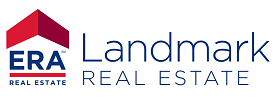Market Watch
New Hope Given to Homeowners
Posted on May 30, 2009Few will argue that times are tougher now than they have been in quite some time, and the housing market has seen more than its fair share of publicity and speculation of how bad it will get before a turnaround comes about. I’d like to take this article to explore some of the efforts by the government to keep current homeowners in their homes which will help the real estate market recovery as a whole.
There is no denying that foreclosures and short sales have been on the rise nationally and even locally. Though thankfully Montana still ranks very low in these categories compared to most of the United States, it is an issue that needed to be addressed. The U.S. Department of Housing and Urban Development (HUD) introduced its HOPE for Homeowners program on October 1, 2008, under the Bush administration. This program attempts to assist homeowners struggling to make their mortgage payments by qualifying them for FHA-insured mortgages with more affordable terms. Lenders who refinance these loans are required to “write down” the loans to a maximum of 90% of a home’s recently appraised value. It is up to lenders to decide if this initial loss is a better scenario than the possibility of an expensive and lengthy foreclosure on the home. To qualify for a HOPE for Homeowners 30-year fixed rate mortgage, the owners must conform to many conditions including that the loan originated on or before January 1, 2008, the terms of the current loan are now unaffordable, a minimum of six full payments have been made on the existing mortgage, and they do not own a second home. The program has been set up so that the monthly mortgage payment is at or below 31 percent of the borrower’s income (or up to 38 percent in some special circumstances). HOPE for Homeowners has been set up to run through September 30, 2011.
The Obama administration has also worked on a revised loan modification program with the goal of preventing foreclosures and revitalizing the housing market. The government has allocated $75 billion to subsidize part of the payment reduction, as well as to provide thousands of dollars in incentives for servicers and borrowers to participate. Loan servicers receive cash incentives of $1000 for each loan modification and receive additional incentives so long as the borrowers stay up-to-date on their payments. Once the modified loan payments have been made for at least three months, borrowers are also eligible to have up to $1000 per year for up to five years taken off of their principal balance simply for making timely payments.
Recently, the Treasury Department announced the first six participants to sign up for President Obama's plan. They include three of the nation's largest banks: JPMorgan Chase, Wells Fargo, and Citigroup. The others are GMAC Mortgage, Saxon Mortgage Services, and Select Portfolio Servicing.
Essentially, this plan requires servicers to reduce monthly payments to no more than 31% of eligible borrowers' pre-tax income. This can be accomplished by reducing interest rates so that the monthly mortgage payments are no more than 38% of the pre-tax income, and then the government subsidizes the loan to bring the payments to the 31% level. However, the subsidies cannot be used to decrease rates to below 2%. Additionally, the lenders are allowed to reduce the total balance of the loan in order to reach the preset affordability levels. An underlying belief of this plan is that if the borrowers can be given an affordable payment, they will be satisfied staying in their current homes regardless of how much equity may have been lost due to market conditions.
The plan is offered to homeowners who are owner-occupiers of their primary residences with outstanding mortgage principal of up to $729,750. It does not apply to speculators. Borrowers are required to prove through documentation and a financial affidavit that they are facing serious hardship and are unable to satisfy their current mortgage terms.
A final note to touch on is that nearly half of the mortgages that are in serious trouble have either home-equity loans or other second mortgages attached to them. Under the revised loan modification plan, it is the intention to combine the first and second mortgages in an effort to reduce monthly payments when possible. When a first mortgage is refinanced, the second mortgage will also be automatically reworked with the government helping to share the costs.
Though these programs are targeted to help homeowners who are on the verge of losing their homes, it is important to view the housing market from a larger perspective. Reducing total foreclosures in an area, whether by state, town or even a neighborhood, helps keep property values for everyone more stable overall.
